Author: Tian Hui
An electric vehicle should, first and foremost, be a car, rather than a collection of parameters.
In the Chinese electric vehicle market, various automakers have engaged in fierce competition over parameters, especially in terms of range and acceleration time, with longer former and shorter latter being sought after. While parameter competition is not inappropriate, there should be a premise that the driving experience of the car should not be sacrificed.
As a representative of luxury brands, BMW’s first domestically produced pure electric vehicle, the iX3, is far superior to other competitors in terms of driving experience and luxury feel. This advantage has received positive feedback in the market, with the BMW iX3 delivery volume surpassing 12,000 units by the end of September. For a luxury pure electric SUV priced at 400,000 yuan, this is an excellent performance, ranking at the forefront of the annual luxury pure electric SUV sales list.
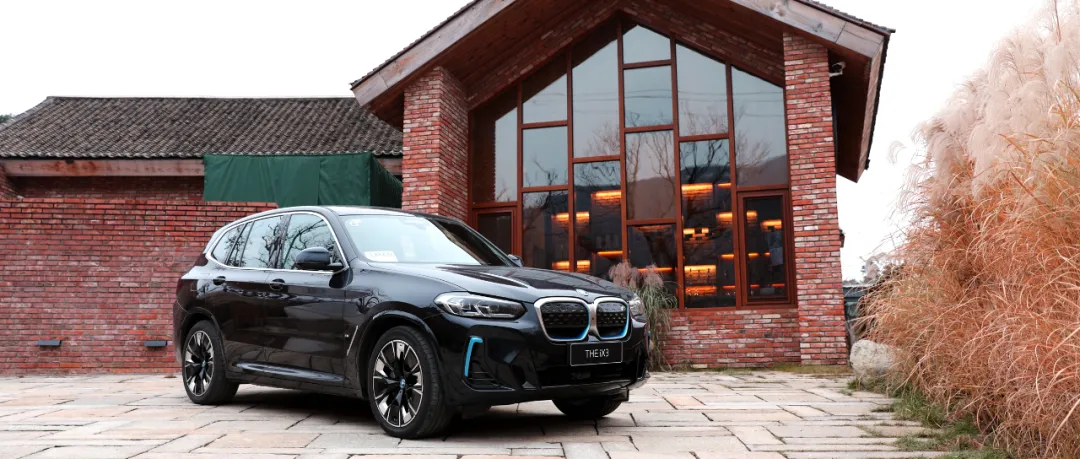
This year, BMW has updated the iX3 model, with a focus on upgrading the appearance and interior quality. How does the new BMW iX3 feel after the upgrade? Is it still the gentleman in a suit who exudes sportiness?
On November 29th, in the foggy Beijing mountains, the Electric Vehicle Observer test drove the new BMW iX3.
More Handsome Appearance Upgrade and New Design Philosophy for Interior
The first appearance of the M sport package, together with the M Midnight package, gives the new BMW iX3 a more handsome look.
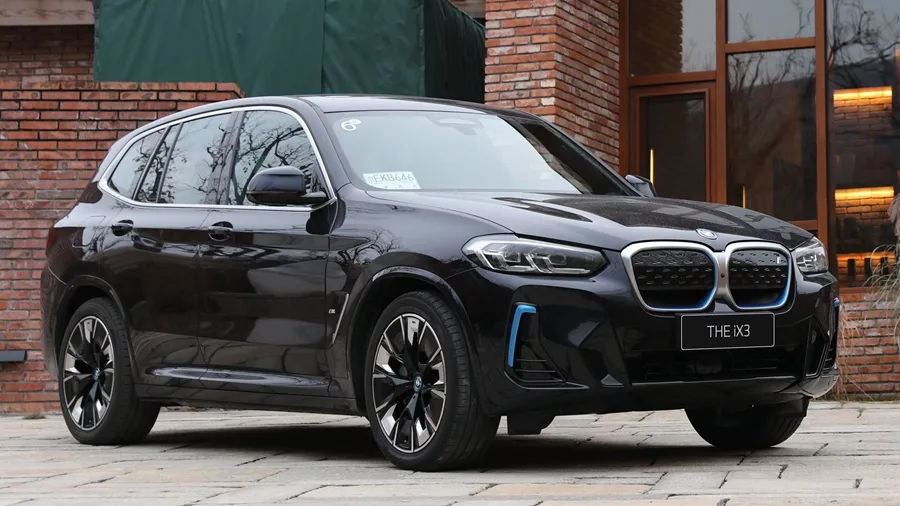
The changes in the appearance of the new iX3 are the most noticeable, with the blue decorative trim of the entire vehicle reduced compared to the old model, only retained in the front and rear bumpers.

In terms of exterior design, the iX3 continues the BMW family style, with the matte silver material of the front air grille frame creating a higher quality texture. The front air grille of the iX3 is not completely enclosed, leaving an air intake vent at the lower position, which plays a role in guiding airflow. Unlike the gasoline version X3, the BMW logo of the iX3 is blue, and the i-series logo is added to the front air grille.

The new BMW iX3 adopts the newly designed M-series sport package, with blue decorative panels added to the front and rear bumpers.### New BMW iX3: A Perfect Blend of BMW i and BMW M
The headlight of the new BMW iX3 is designed in a 3D style with evident sporty lines. When the vehicle starts, the lights will rotate synchronously, giving a strong sense of technology.
The body of the new BMW iX3 has undergone few changes, except for the upgraded decorative board of the position of the front fender. Thanks to the M Sport Package, the new BMW iX3 becomes the first BMW model that integrates both BMW i and BMW M logos.
At the rear end, the overall lines of the new BMW iX3 are relatively unchanged, while the changes in details are more obvious. The newly added 3D floating LED taillights are particularly eye-catching, and the bottom diffuser makes the visual experience more three-dimensional. The blue decorative board at the exhaust position highlights the uniqueness of the iX3.
Regarding details, the most significant change in the appearance of the new BMW iX3 is the wheel hub. The optimized 20-inch wheel hub is different from most fully enclosed energy-saving wheel hub designs. Not only does the new BMW iX3’s wheel hub have energy-saving effects, it also does not reduce the visual sporty sense, creating a coordinated overall sporty feeling. In driving mode, the new BMW iX3’s wheel hub is even more dynamic.
In terms of interior design, the new BMW iX3 introduces the “Function Island” design concept for the first time.
Walking through the door into the new BMW iX3, there is a refreshing feeling. The new iX3 interior design incorporates the current trend of digital interconnection and, for the first time, introduces the “Function Island” design concept on pure electric car models.
The three major “Function Islands” concentrate all the functional buttons in three areas: the driver’s left light panel, air conditioning, and gear lever, thereby saving more space, making the cockpit more concise and atmospheric.
The central console of the “Function Island” design concept and the 12.3-inch central touch screen display, combined with the 12.3-inch full LCD digital instrument panel, bring owners a more outstanding digital sensory experience.The interior color scheme and material selection of the new BMW iX3 have been upgraded to Sensatec 2.0 synthetic leather, which is more environmentally friendly than traditional leather, with superior ventilation and a more delicate touch.
In response to the preferences of Chinese consumers, the new BMW iX3 is specially equipped with more comfortable seats, with thicker cushions and backrests than overseas models. The front of the seat cushion features an independent leg rest, and the electric seats support electric adjustment and heating, and can support two sets of seat position memories.
In terms of interior details, the new BMW iX3 still adopts a center console screen design that favors the driver, showing a driver-centered design concept. Unlike new energy vehicle companies that replace physical buttons with screens, BMW iX3 retains physical buttons that can adjust the air conditioning and entertainment systems.
One small detail in terms of functionality is that the new BMW iX3 has added a heated steering wheel, which is more friendly to owners in northern regions.
The rear space of the new BMW iX3 is spacious, with large redundancies in knee and headroom when carrying adult males. For comfort, the new BMW iX3 prepares independent air conditioning controls for rear passengers. It is worth mentioning that the panoramic sunroof of the new BMW iX3 has a large area and extends to the top of the rear passengers’ heads, increasing their visibility and enhancing their ride comfort.
In terms of seat cushions, the rear seat backrest angle of the new BMW iX3 is adjustable, and supports 4/2/4 independent adjustment, further enhancing the comfort of rear passengers while also making the vehicle’s storage space more flexible.
Strong Kinetic Energy Recovery System
Driving the new BMW iX3 on the winding mountain roads of Huairou in Beijing is a pleasure.The smooth acceleration of pure electric drive and the driving experience of traditional gasoline vehicles are fully demonstrated in the new BMW iX3.
In terms of power, the new BMW iX3 adopts a rear-wheel-drive design. The permanent magnet motor located in the rear axle has a maximum power of 210 kW and a maximum torque of 400 N.m, reaching the level of a 2.0T gasoline engine in the same class of vehicles, and it is also one of the models with the highest motor power among pure electric vehicles currently on sale.
Thanks to the rear-wheel drive and maximum power of 210 kW, the new BMW iX3 controls the 0-100 km/h acceleration in 6.8 seconds. More importantly, the iX3 delivers an extremely smooth power output process, and provides excellent acceleration experience in multiple driving modes.
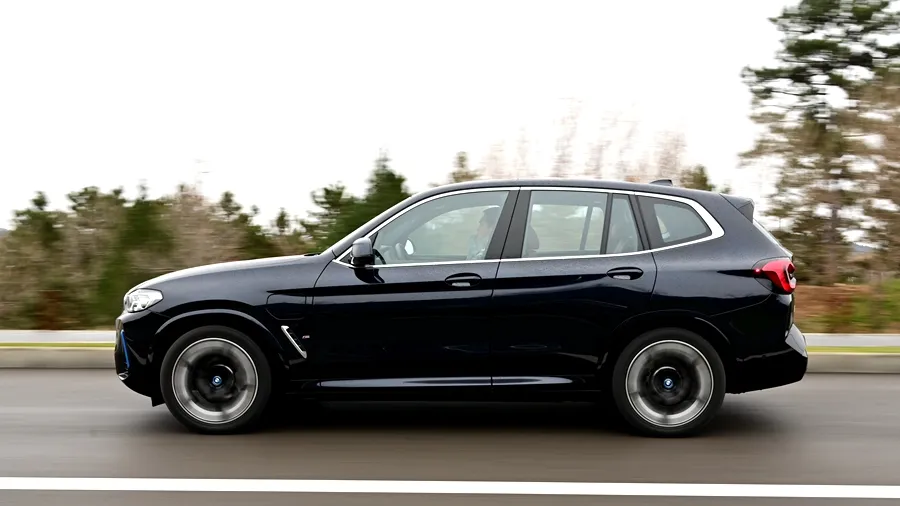
One advantage of electric vehicles is that the kinetic energy recovery system can indirectly control the vehicle speed. This function is fully utilized in the new BMW iX3.
Unlike gasoline vehicles, the new BMW iX3 has a single-pedal operation mode- B gear mode. After enabling the strongest energy recovery intensity of the B gear mode, the driver can control the acceleration and braking of the vehicle by stepping on the accelerator pedal.
Of course, if you have just switched from a gasoline car to an electric car, the D gear + adaptive energy recovery mode of the new BMW iX3 can seamlessly transition you, as this combination can provide the closest driving experience to a gasoline vehicle. Moreover, the adaptive energy recovery mode can automatically adjust the energy recovery intensity based on the distance to the front vehicle and the current speed, ensuring comfortable driving while providing excellent energy consumption performance.

On the Huairou Qifeng Road, after switching to SPORT mode, the new BMW iX3’s power response becomes more active. Although it is a rear-wheel drive model, even when deeply stepping on the accelerator pedal in a cornering state, the new BMW iX3 can still control the body posture. When overtaking on uphill roads, the iX3 can provide the driver with full confidence.
Unlike the abrupt acceleration of 0-100 km/h in 4 seconds, or the slight hesitation during acceleration of a gasoline vehicle, the feeling of driving up hills in the new BMW iX3 is like a mature marathon athlete who knows how to use good rhythm, speeding up when needed and slowing down when necessary.
Truly achieve travel freedom
When consumers switch from gasoline vehicles to electric vehicles, the biggest pain point is anxiety about the range and charging. After all, this is related to consumers’ travel freedom.
In terms of range, the new BMW iX3 is one of the few electric vehicles that can be described as “real”.Because the range of the new BMW iX3 is dynamically displayed, the number displayed on the dashboard is closely related to the current usage status of the vehicle. Any operation that increases energy consumption will instantly reduce the remaining range, and once the electric motor load is reduced, the number will immediately increase again. For example, at the beginning of the test drive, the remaining range displayed on the test drive car is only 211 kilometers.

When the range is displayed close to full charge, it is only 211 kilometers, which is a considerable deviation from the claimed 500 kilometers range of the new BMW iX3. Of course, this is not because the range of the new BMW iX3 is “false”, but because the new BMW iX3 uses a more rigorous algorithm.
Because the new BMW iX3 idled the air conditioner for a long time before the test drive started, the average speed was only 10.4km/h. Therefore, according to the algorithm that combines the average speed and air conditioning energy consumption, the displayed range of the new BMW iX3 is an extremely honest number.
After driving on mountain roads and parking for shooting for more than 100 kilometers, and turning on the 26°C automatic air conditioning, the remaining range of the new BMW iX3 has only decreased by 27 kilometers at the end.
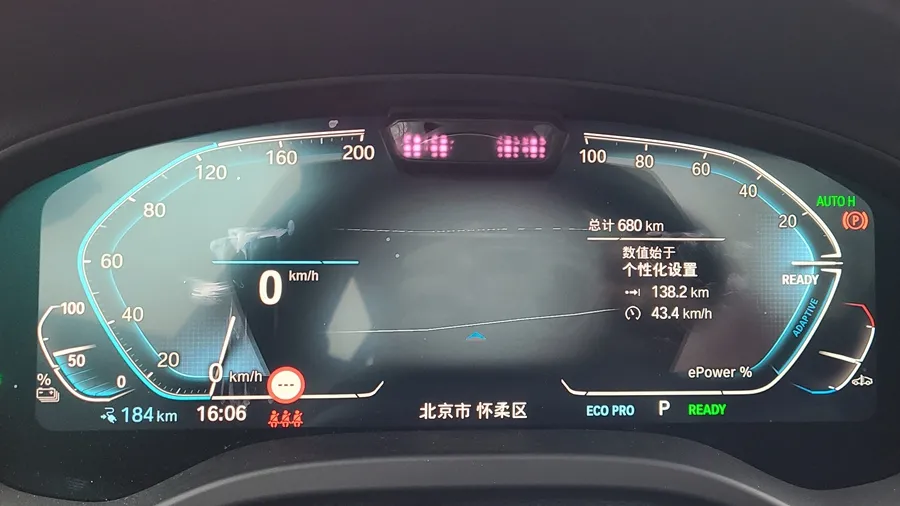
Compared with other electric vehicle brands, such data is obviously too honest-the range drops by 27 kilometers, and the actual driving distance is 138.2 kilometers.
This may be BMW’s strictness on the authenticity of the range, calculating everything known and unknown into energy consumption, and calculating the most realistic range, in order to give car owners the greatest peace of mind in daily use.
In fact, BMW does not need to be so harsh.
The power battery of the new BMW iX3 uses ternary lithium material, which already has good performance in winter, plus the outstanding performance of the heat pump air conditioner on energy saving. The energy consumption performance of the new BMW iX3 is quite good among similar models. The officially announced data is 16.7kWh/100km. In terms of battery capacity, the new BMW iX3 is equipped with 80kWh of electricity, which is also relatively high among similar models, and can fully meet the needs of car owners to achieve “air conditioning freedom.”
Moreover, BMW is also the fastest among luxury brands in the construction of the charging system.Owners who purchase the new BMW iX3 can enjoy the wall box charging station provided by BMW, as well as a free basic installation service. By the end of 2021, BMW will have access to over 360,000 high-quality charging stations, including 150,000 DC fast charging stations, for its customers to use at public charging stations. It is worth mentioning that since the introduction of the new BMW iX3, BMW has begun to support plug-and-charge services.
In key urban transportation hubs, BMW also provides exclusive parking and charging services for iX3 owners, covering 5 airports and 13 popular business districts in 9 major cities across the country.
Therefore, in terms of travel freedom, the BMW iX3 can fully meet the needs of consumers.
Benchmark Safety Performance
In terms of safety, the BMW iX3 scored 95.7% under the 2018 version of C-NCAP regulations, ranking first among all models tested based on this version of regulations. This version of regulations focuses on strengthening the testing items for passenger protection, which are divided into full-frontal collision tests, side-impact tests, 40% offset collision tests, and whip tests.

It is not easy for an electric vehicle to achieve such results. In terms of core passenger space protection, the BMW iX3 uses a structural design with a large amount of 1000MPa hot-formed high-strength steel, creating a sturdy driving and riding space for users.
In the new pedestrian protection test, the BMW iX3 scored 87.01% due to the vehicle being equipped with an active pop-up hood, which can immediately pop up the front hood when a pedestrian collision is detected, effectively reducing the impact on the pedestrian’s head.
In terms of the safety of the power battery, thanks to BMW’s exploration of battery-related technologies, the BMW iX3 uses an 811 type nickel-cobalt-manganese ternary lithium-ion battery cell to ensure safety from both chemical and physical aspects. The battery pack shell is made of aluminum alloy, and with the internal multi-channel reinforcement beams, side-buffering structure, module energy absorbing design, liquid thermal control components, and more, the safety of the battery is ensured.
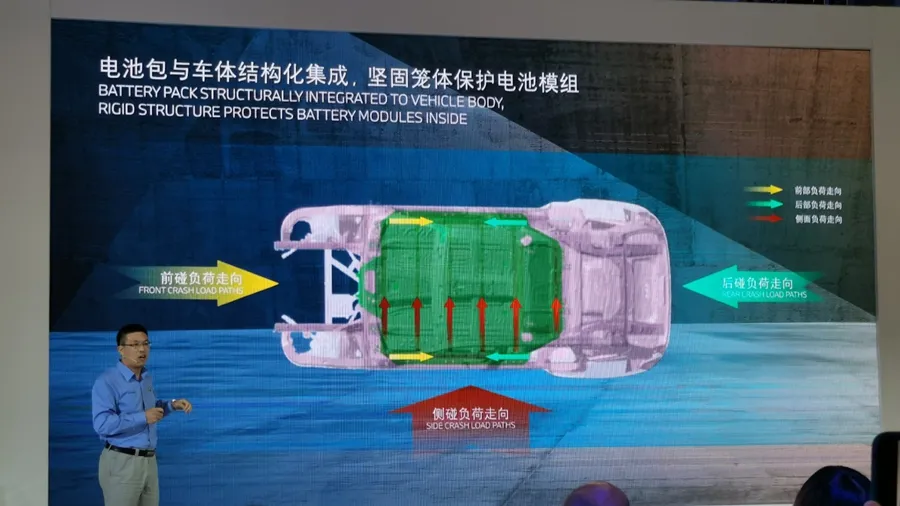
In terms of the safety of the power battery structure, the BMW iX3’s power battery pack is arranged in the central area of the vehicle’s chassis, which increases the overall rigidity of the vehicle while also effectively reducing the risk of direct impact on the battery pack in front and rear collisions.
During the research and development of the BMW iX3, the battery pack also passed up to 128 mechanical verification tests, such as fire, seawater immersion, dropping, and more, along with 994 software function tests, far exceeding the industry’s average testing intensity.
The New BMW iX3 is the Smart Choice for Career ElitesDespite the fierce competition from emerging new car makers, it is undeniable that BMW has always been the industry benchmark in creating luxury and driving pleasure.
After switching to pure electric power, the new BMW iX3 maintains its size but performs even better in terms of power and NVH compared to the fuel version X3. However, what remains unchanged is that the new BMW iX3 still delivers a thrilling driving experience.
In terms of intelligence, the new BMW iX3 is equipped with the 7th generation BMW iDrive human-machine interaction system and a 12.3-inch large center display, continuing to lead the luxury SUV segment.
The Pro Automatic Driving Assistance System also enables the new BMW iX3 to support automatic parking, lane center keeping and automatic following, enhancing driving convenience.
After a thorough upgrade in exterior and interior design, the new BMW iX3 once again leads the aesthetic development of luxury brand SUVs.
In the face of the most topical environmental demands, the new BMW iX3 also stands out, as the BMW Shenyang plant has already started using green electricity.
At the same time, the new BMW iX3 has achieved sustainable development across the full value chain of supply chain coverage, production and manufacturing, and vehicle use stages, fully embodying the green connotation of a luxury electric vehicle and showcasing the paradigm and responsibility that electric luxury cars should have in the new era.
After this mid-term facelift, the new BMW iX3 is more suitable for the purchasing demands of elite professionals and is a smart choice for them.
This article is a translation by ChatGPT of a Chinese report from 42HOW. If you have any questions about it, please email bd@42how.com.